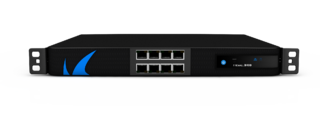Currently my home network is pretty simple … at least for a computer scientist! 

My ISP provided an all-in-one box with TV, landline and network router. The latter being very limited and with a crap WiFi access point (AP). So I’ve been using my old Asus RT-AC68U router as a gateway, a 24 ports switch and a Ubiquiti Unifi AP for providing WiFi in the complete house (and garden). The router and switch went into the basement whereas I’ve placed the AP roughly in the house centre. The ISP box could not be configured as bridge but supported to set a DMZ host, so I’ve configure the Asus router to be the DMZ.
Here is the basic setup:
+--------+ +--------+
| | DMZ | | +------------------------+
|ISP Box +-------------+ Router +----------+ Switch |
| | | | +--+------+---+---+---+--+
+--------+ +--------+ | | | | |
| | | | |
+--+--+ + + + +
| AP | Home Network / Lab
+-----+
So I’m using only 2 ports on my router (or more exactly network gateway), the WAN and one on the LAN. This router is the peace in my current network I want to change and I will explain why and how.
Post updated on 2018-06-13.


